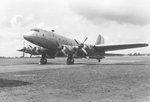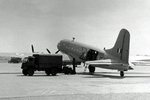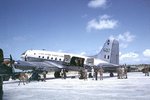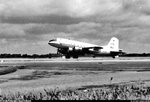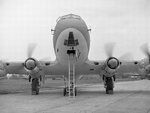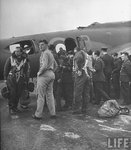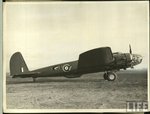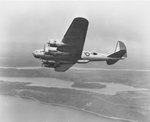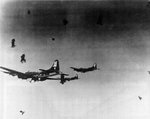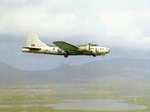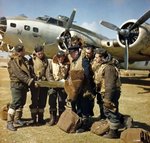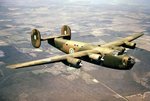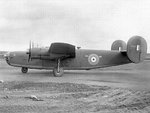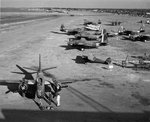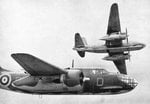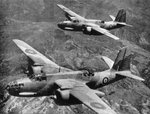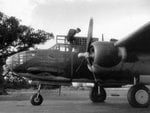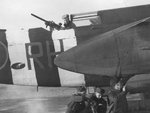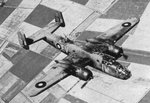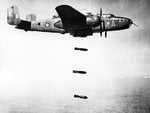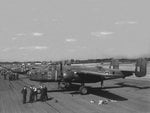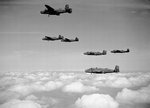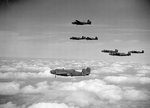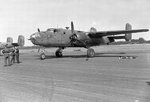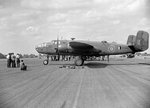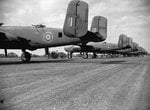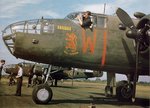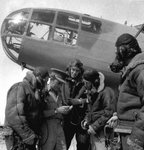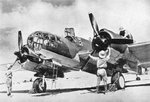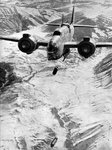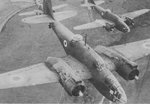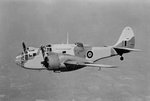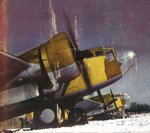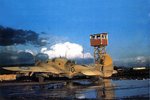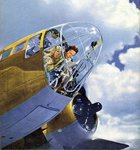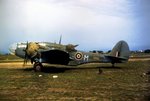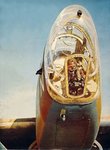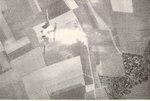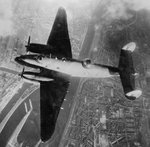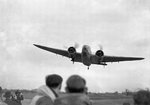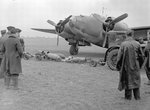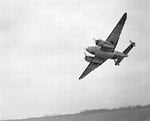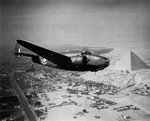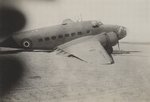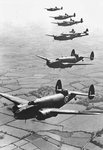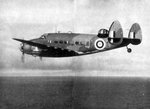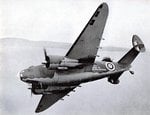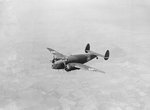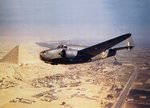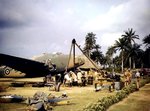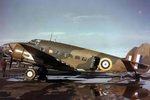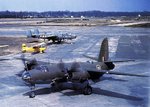- Thread starter
- #61
Handley Page's answer to meet Air Staff Specification C.3/44 for a long-range general purpose transport was the H.P.67. It was an all-metal low-wing cantilever monoplane with conventional tail unit. It had all-metal tapering dihedral wings, which had been designed for the abandoned HP.66 bomber development of the Handley Page Halifax and a circular fuselage suitable for pressurisation up to 5.5 psi (38 kPa). It had a retractable undercarriage and tailwheel. The Hastings was powered by four wing-mounted Bristol Hercules 101 sleeve valve radial engines. In service the aircraft was operated by a crew of five and could accommodate either 30 paratroopers, 32 stretchers and 28 sitting casualties, or 50 fully equipped troops.
A civilian version of the Hastings was developed as the Handley Page Hermes. The Hermes prototypes were given priority over the Hastings but the program was put on hold after the prototype crashed on its first flight on 2 December 1945 and the company concentrated on the military Hastings variant. The first of two Hastings prototype (TE580) flew at RAF Wittering on 7 May 1946.Tests showed that the aircraft was laterally unstable and that it had poor stall warning capabilities. The prototypes and first few production aircraft were subject to a series of urgent modifactions and testing to resolve these problems. A temporary solution was found by modifying the tailplane with 15° of dihedral, while being fitted with synthetic stall warning. This allowed the first production aircraft (Hastings C1) to enter service in October 1948.
The RAF initial ordered 100 Hastings C1s but the last six were built as weather reconnaissance versions as the Hastings Met. Mk 1, and seven other aircraft were converted to this standard. Eight C1 aircraft were later converted to Hastings T5 trainers which were used for training the V-bomber crews; three at a time. While tail modifications introduced to the C1 allowed it to enter service, a more definitive solution was the fitting of an extended-span tailplane, which was mounted lower on the fuselage. These changes, together with the fitting of additional fuel tanks in the outer wing, resulted in the C Mk 2, while a further modified VIP transport, fitted with yet more fuel to give a longer range become the C Mk 4. A total of 147 aircraft were built for the Royal Air Force and four for the Royal New Zealand Air Force, a total of 151.
A civilian version of the Hastings was developed as the Handley Page Hermes. The Hermes prototypes were given priority over the Hastings but the program was put on hold after the prototype crashed on its first flight on 2 December 1945 and the company concentrated on the military Hastings variant. The first of two Hastings prototype (TE580) flew at RAF Wittering on 7 May 1946.Tests showed that the aircraft was laterally unstable and that it had poor stall warning capabilities. The prototypes and first few production aircraft were subject to a series of urgent modifactions and testing to resolve these problems. A temporary solution was found by modifying the tailplane with 15° of dihedral, while being fitted with synthetic stall warning. This allowed the first production aircraft (Hastings C1) to enter service in October 1948.
The RAF initial ordered 100 Hastings C1s but the last six were built as weather reconnaissance versions as the Hastings Met. Mk 1, and seven other aircraft were converted to this standard. Eight C1 aircraft were later converted to Hastings T5 trainers which were used for training the V-bomber crews; three at a time. While tail modifications introduced to the C1 allowed it to enter service, a more definitive solution was the fitting of an extended-span tailplane, which was mounted lower on the fuselage. These changes, together with the fitting of additional fuel tanks in the outer wing, resulted in the C Mk 2, while a further modified VIP transport, fitted with yet more fuel to give a longer range become the C Mk 4. A total of 147 aircraft were built for the Royal Air Force and four for the Royal New Zealand Air Force, a total of 151.

